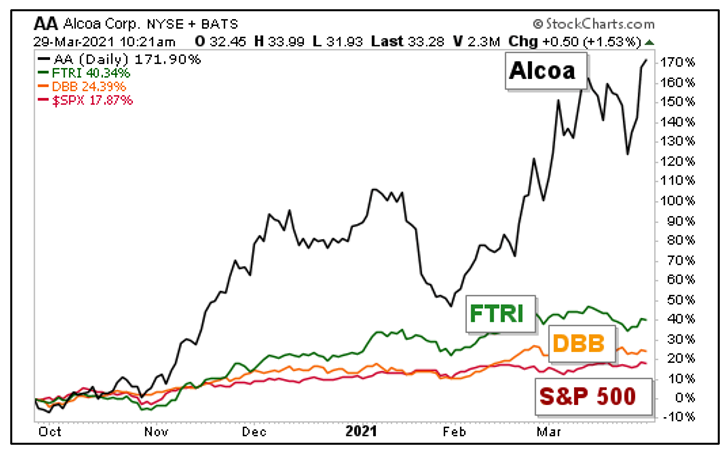How To Play Aluminum
Stimulus plans around the globe keep stoking the fires under aluminum. Aluminum was rare when it was first discovered, and for a while, it was very expensive — as expensive as platinum and harder to work with. It was considered a rare and wondrous metal, which is why the Washington Monument was capped with a pyramid of aluminum in 1884.
It wasn’t until large-scale production of aluminum became possible in 1888 that its price began to fall. Aluminum’s ability to form hard, light alloys with other metals provided the light, yet strong, airframes used in both World Wars -- in addition to widescale building and construction. In 1954, aluminum production eclipsed that of copper and became second only to iron as a main industrial metal.
Eventually, it became widely used in everyday items, from eyeglass frames to aluminum foil and beverage cans. And because of its corrosion resistance, light weight, conductivity, and mechanical strength, aluminum is also used for electrical applications (as conductor alloys, motors, generators, transformers, capacitors, etc.) and in machinery and equipment (processing equipment, pipes, tools, etc.).
Aluminum production is an exceedingly laborious endeavor. Bauxite ore is first converted to aluminum oxide and then to 99.99% pure aluminum by three separate processes. All this requires a lot of energy. How much energy, you ask? About 5% of all the electricity generated in the United States in a year. Yeah, that surprised me, too.
And that’s why producers tend to locate smelters in places where electric power is both plentiful and inexpensive. The largest facilities are located in China, India, Russia, Canada, and the United Arab Emirates (UAE).
Obviously, aluminum is a major player in the world economy. And the world economy is just now rising out of the coronavirus pandemic in a big way. So how can you play this?
The Invesco DB Base Metals Fund (DBB) holds a basket of future contracts on aluminum, copper, and zinc. While it’s not a pure aluminum play, these three industrial metals should travel similar paths. The fund has an expense ratio of 0.75% per year.
The First Trust Indxx Global Natural Resources Income ETF (FTRI) holds a bunch of natural resource stocks. Its two biggest holdings, BHP Group (BHP) and Rio Tinto Group (RIO), both produce aluminum. FTRI also sports a nice dividend yield of 3.27% and has an expense ratio of 0.43%. Be aware, though, that this fund’s trading volume can be thin at times.
Alcoa Corp. (AA) is probably the best pure play on aluminum you can find. With its subsidiaries, the company not only mines bauxite ore but also produces alumina and pure aluminum for customers in the U.S. and internationally.
Alcoa even owns hydroelectric plants that sell electricity to traders, large industrial consumers, distribution companies, and other generation companies. The firm was founded in 1888 and is headquartered in Pittsburgh. Let’s look at a performance chart of all three over the past six months.

All three have outperformed the S&P 500. But Alcoa has led the pack with a 171.9% gain in the past six months.
Which will outperform going forward? My crystal ball is cloudy on that one. Do your own due diligence; you’re in charge of your investment destiny. Yes, aluminum may seem boring — but it’s anything but boring for investors going forward.
Disclaimer: © 2021 MoneyShow.com, LLC. All Rights Reserved.



